Ambient Contrast Ratio
One of the Most Important Aspects of Image Quality
Contrast is an effective way to stand out and create a superior viewing experience for your audiences. A high contrast display produces deeper blacks, brighter whites, and more brilliant colors, while low contrast displays struggle to show depth, producing washed-out content without detail, especially in bright environments. A reliable method to assess the contrast performance of a display is to review its ambient contrast ratio (ACR). ACR is the difference between the brightest white and the darkest black a display can show under ambient lighting conditions.
Contrast ratios above are the inherent ratio of the images themselves. Actual contrast varies based on your monitor and ambient lighting.
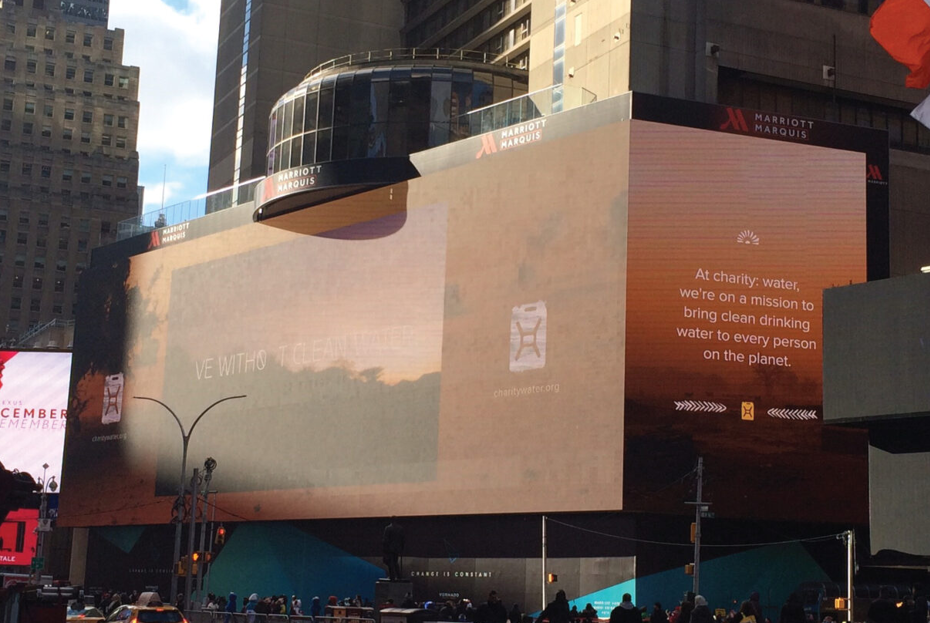
The Effects of Ambient Light
Ambient light, whether from sunlight or indoor fixtures, can greatly influence the perceived contrast of a display. Direct sunlight and ambient light decrease contrast by washing out colors, diminishing details, and adding unwanted luminance to the darkest areas of an image. In almost every installation setting, a display will be exposed to some degree of ambient light.
Some displays lack contrast when exposed to direct sun.
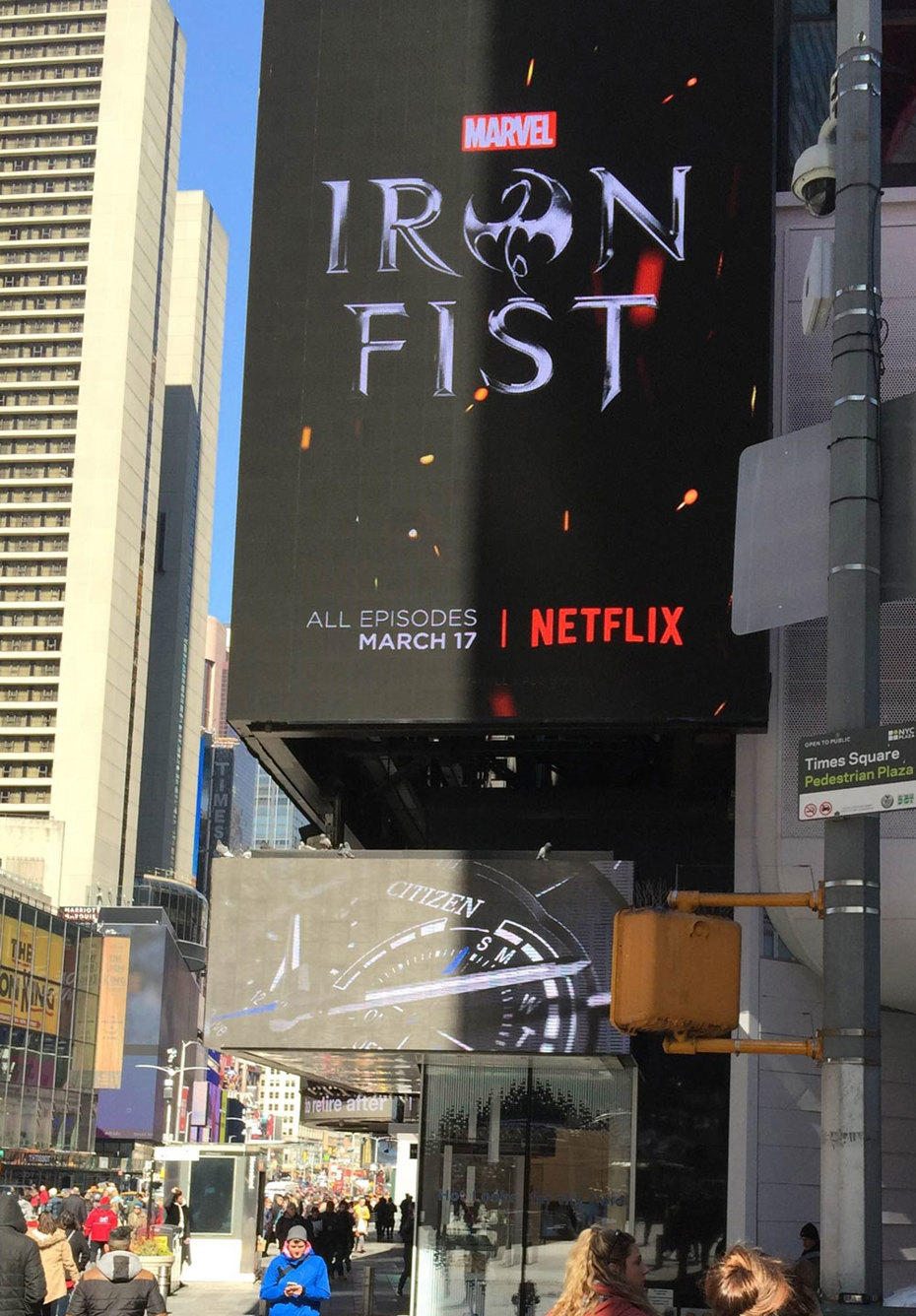
Preserving Image Quality with High Contrast Displays
The good news? You don’t have to sacrifice image quality with displays designed for superior contrast performance. Contrary to a common industry belief, high brightness displays do not address the issue of insufficient contrast caused by ambient light. Darker black levels are the best method to fight ambient light.
With 50+ years of experience, Daktronics displays are strategically designed and tested to maximize display contrast, keeping imagery looking sharp in the brightest environments.
See photo for comparison: the display showing a Netflix ad is Daktronics, while the display below is a competitor display.
How Daktronics Measures Ambient Contrast
Observed Contrast in the Real World
The contrast observed in a real environment will be different than the contrast ratio listed on a spec sheet. This is true for all display manufacturers because ambient light sources contribute to illuminance, the amount of light falling on a surface/display.
Each installation also has unique lighting scenarios and variables that affect contrast, leading to variations in observed contrast across applications. Even within the same application, the observed contrast can change depending on the time of day, season, or current weather conditions.
Measuring Contrast in Controlled Environments
In a controlled environment, we measure under consistent lighting conditions to ensure an accurate expectation of contrast performance across all Daktronics products. We use the ambient contrast ratio, and it’s the ratio you’ll see listed on our spec sheets. ACR includes the effects of ambient light on contrast and it's one of the best indicators of a display's contrast in a real-world environment.
While under illumination, we measure the observed luminance (the sum of emitted and reflected light, measured in nits) for both the brightest white and darkest black produced by the display sample. The luminance measurements are inputted into the equation to determine the specified ratio.
Testing Standards
Our testing accounts for variation in ambient light experienced by both indoor and outdoor displays. These adjustments ensure a more accurate measurement that aligns with the intended environment.
On specification sheets we report contrast at fairly low (10 and 50) lux environments, making it easier to compare various products. More detailed data for unique environments is available upon request.
Detailed measurement & calculation methods for ambient contrast ratios are available in:
- IDMS V1.2 Information Display Measurements Standard
- IEC 62977-2-2:2020 Electronic Displays – Measurements of Optical characteristics – Ambient Performance.
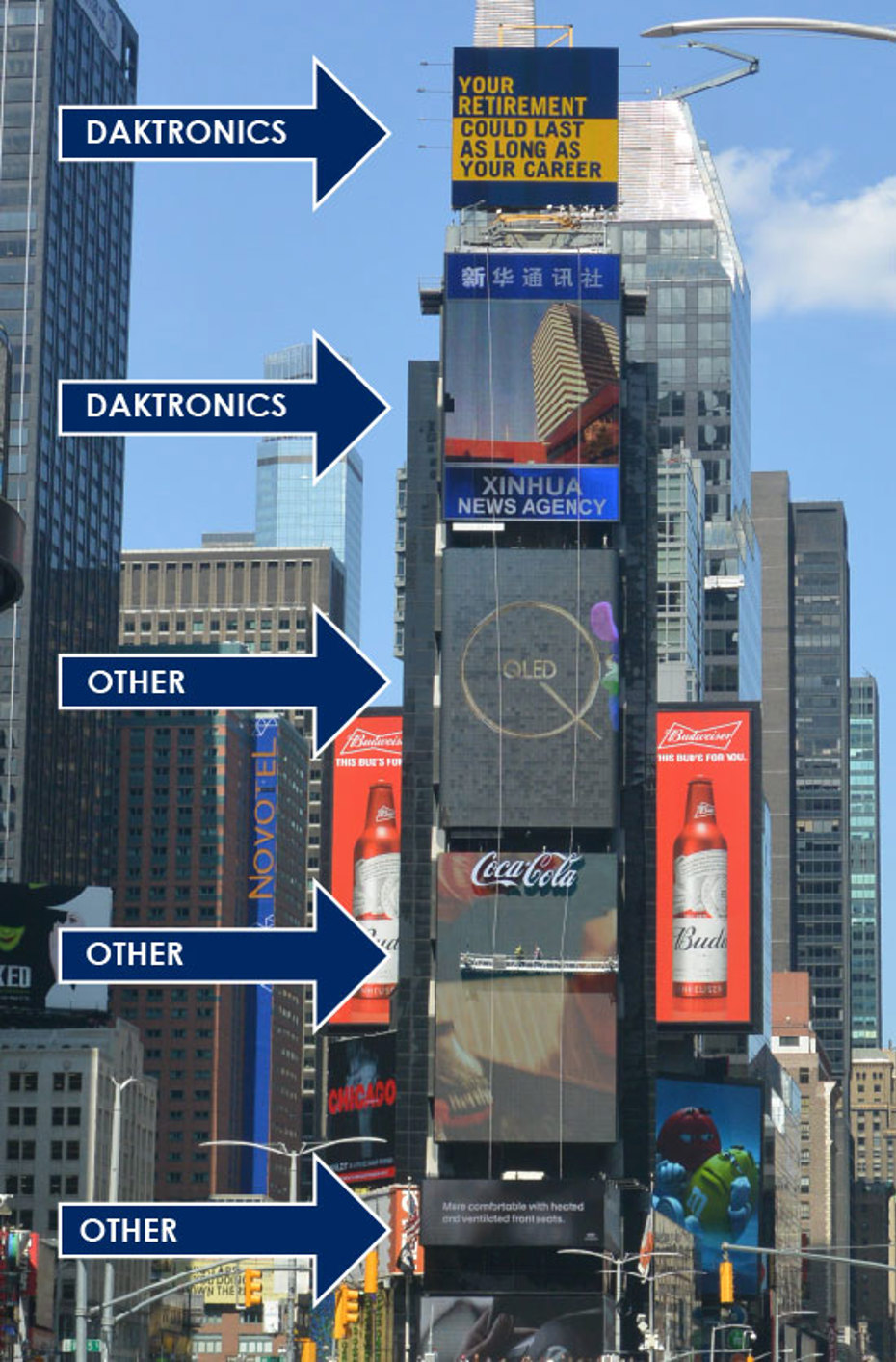
Evaluating Specs Between Manufacturers
Understanding which testing method a manufacturer uses is crucial for making a fair assessment between display specs. Some manufacturers tend to use different levels of illumination and angles, or don’t measure for illumination at all. The inconsistencies between testing procedures can lead to misleading contrast ratios on spec sheets and visible differences in a real environment.
Though these displays list a similar contrast ratio, the actual contrast performance is easily distinguishable.
Fighting Light with Light
An Ineffective Method
Many display manufacturers turn up the brightness to combat ambient light. But, fighting light with more light is not as effective or efficient at preserving contrast as contrast enhancing features. To achieve the level of brightness needed to see a visual difference in contrast, a significant increase in power is required, leading to higher ownership costs, higher display operating temperature, and a toll on the environment.
Our Trusted Approach
Maximize Contrast
Maximize Power Savings
Minimize Light Reflection
Minimize Environmental Impact
Using Technology to Enhance Contrast
To achieve the highest observable contrast, we take an environmentally-friendly approach that adapts to the challenges of ambient light. Innovative design features are energy efficient and proven to be more visually impactful than competitive methods, such as maxing display brightness.
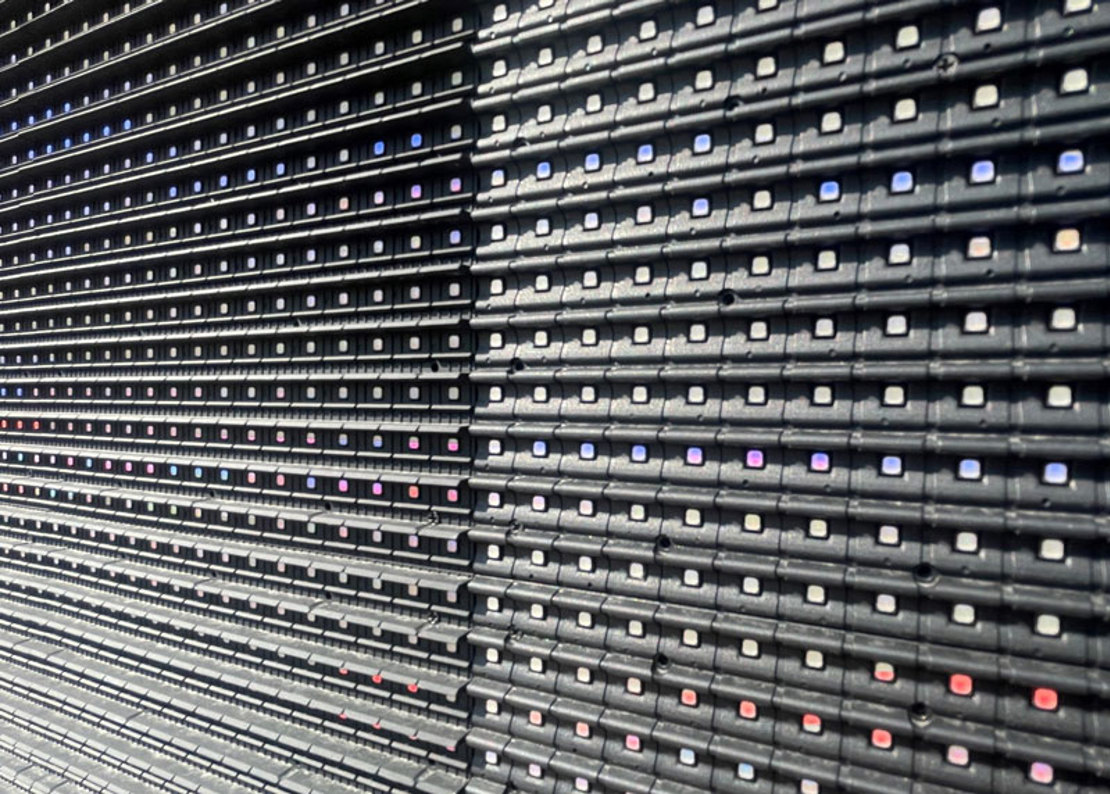
Louvers
Module louvers enhance contrast by shading our LEDs from direct sunlight and the harmful, aging effects of UV rays.
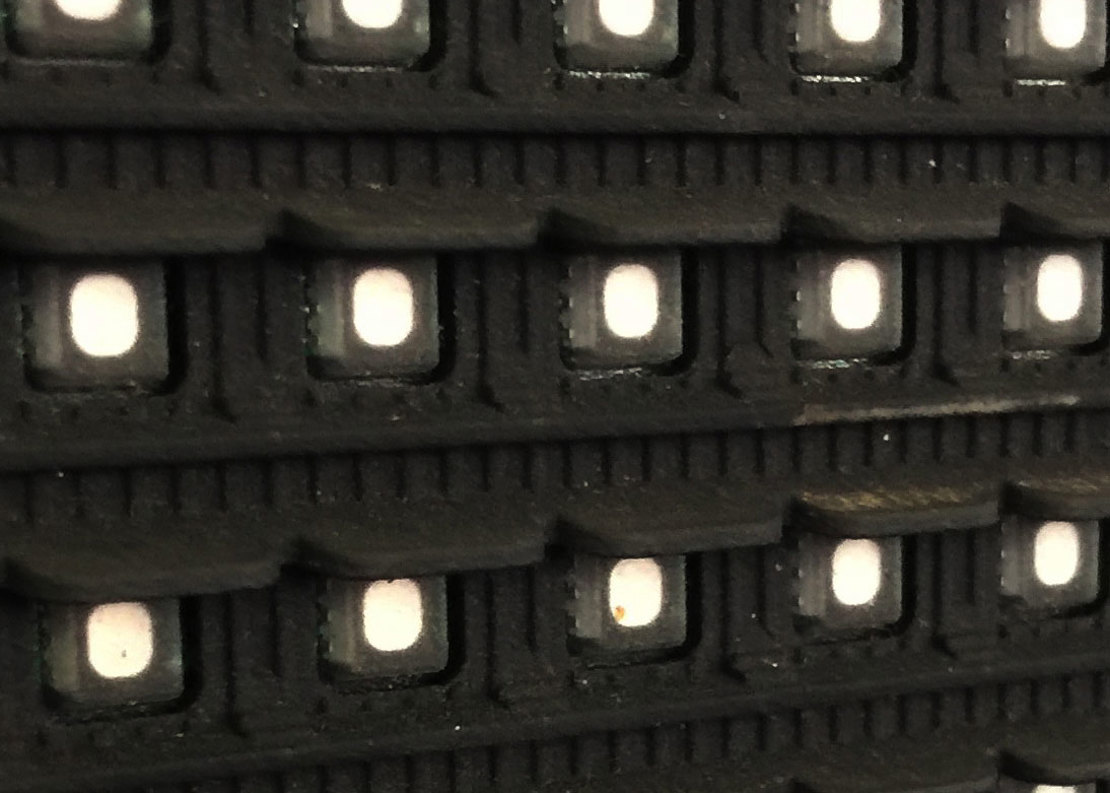
Surface Texture
The vertical, light-trapping etchings on the face of our outdoor LED modules diffuse light that reaches the display face and reduces mirror-like reflectivity that harms contrast.
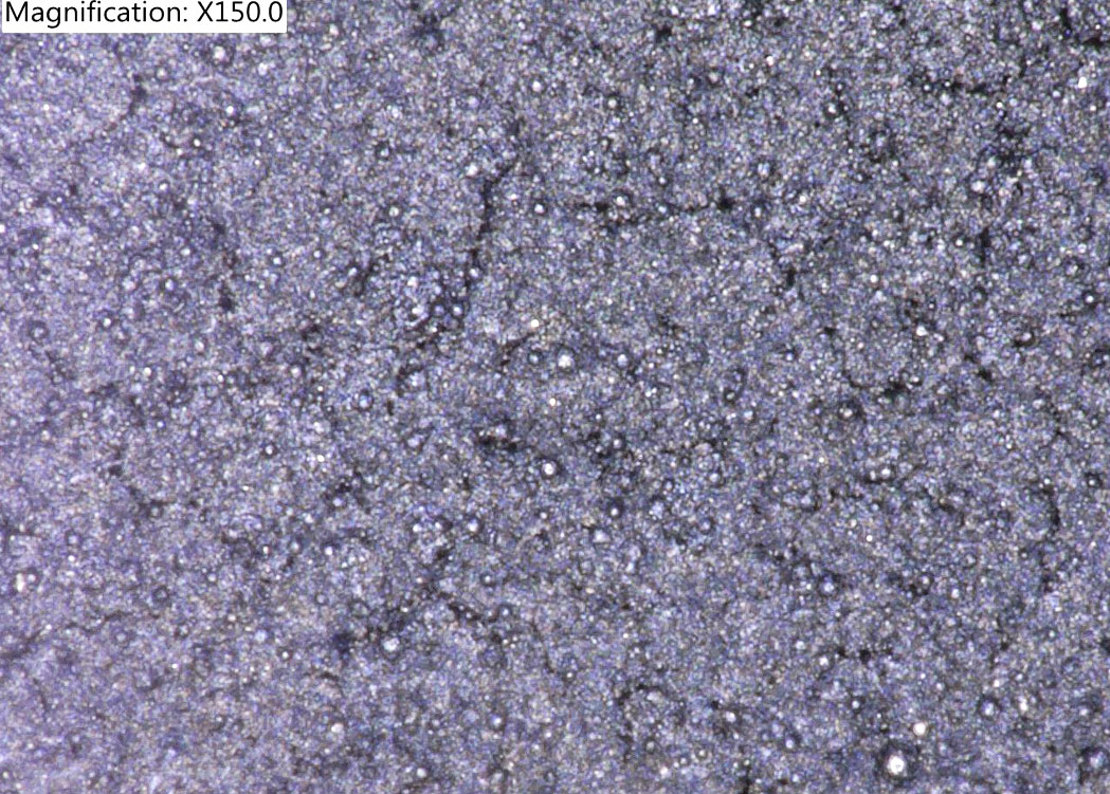
Anti-reflective Paint
A UV-resistant, highly textured, deep matte black paint covers our display louvers to prevent ambient light from reflecting to viewers.
Louver Options
Not only do louvers preserve contrast, but they also influence viewing angles by blocking LED light output towards unwanted directions, improving the viewing experience.
| Louver Type | Benefit | Viewing Direction | Possible Applications |
|---|---|---|---|
|
High Contrast |
Deep black contrast | Best for viewing straight on | Billboards, east- or west-facing displays, exposed to full sun |
|
City View |
Enhanced underside visibility, black contrast | Best for viewing below the display | Public squares, urban billboards, stadiums |
|
Wide View |
Maximum off-angle viewing | Best for viewing at wide horizontal & vertical angles | Street furniture, wayfinding, stadiums |
Louver visuals are for reference only. Actual louver design will vary per pixel pitch. See product specs for viewing angles.
Selecting the Best Louver
Achieving the best possible viewing experience for your installation requires a thorough understanding of your needs and finding the perfect balance between brightness, contrast, and viewing angles. Begin by assessing your unique site conditions and viewing requirements:
- What direction will the display face?
- Will it be exposed to direct sun?
- Where will spectators be in relation to the display?
- What type of content will be displayed?
Consult with us today for more information or request a site evaluation for our recommended solution.

















